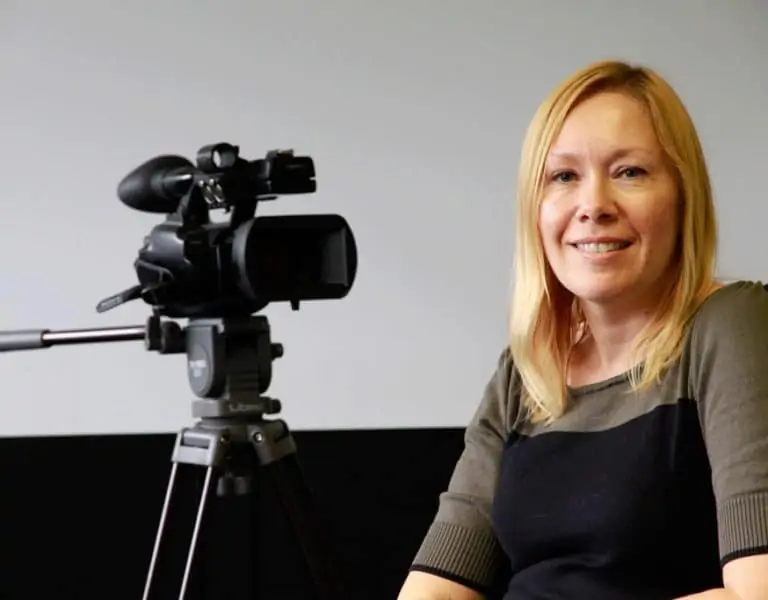New forecast of skills and training needs to support UK film & high-end TV production boom
Jun 24, 2022

A new forecast of film and high-end TV production growth and skills needs published Friday 24 June finds:
- Film and HETV production likely to hit between £7.07 billion and £7.66 billion by 2025
- Between 15,130 and 20,770 additional crew needed to meet demand
- By 2025, training existing and new workforce will need annual investment of £95.1 million to £104.3 million
- The estimated economic return is more than 15 times the cost of the training investment
Film and high-end television production in the UK could be worth £7.66 billion – up from £5.64 billion – by 2025 and require nearly 21,000 more crew under a detailed analysis published today.
Research commissioned by ScreenSkills, the industry-led skills body for UK screen, supported by the BFI, awarding National Lottery funding under the Future Film Skills strategy, estimates that continued growth will require the equivalent of between 15,130 and 20,770 additional full-time crew within three years.
The Forecast of Labour Market Shortages and Training Investment Needs in Film and High-end TV Production, carried out by the consultancy, Nordicity, with the accountancy firm Saffery Champness LLP, says between £95.1 million and £104.3 million will be needed annually by 2025 to train the film and HETV workforce – both existing and the new recruits.
The indirect and induced impact of training investment in the order of £104.3 million would go a long way to creating a further 23,270 full-time jobs across the UK economy on top of the additional 20,770 crew. Latest figures show film and high-end television currently generates the equivalent of 122,000 full-time jobs.
Spending approximately £289.3 million on training during the three-year period 2023 to 2025 would enable film and high-end TV production to generate an additional £4.56 billion in GVA (gross value added) including direct, indirect and induced impact. This represents an economic return of more than 15 times the training investment.
The authors described this return on investment as “compelling” – and acknowledge that the personnel needed to meet demand “may be understated”.
They conducted interviews with major film and HETV production companies alongside an analysis of existing published and unpublished research to conclude that there is still room for growth on top of the rapid expansion fuelled by the introduction of the HETV Tax Relief in 2013 and a strong bounce back after the Covid lockdown.
The authors conclude that film and HETV production in the UK is likely to grow at an annual average rate of 7.3% between 2022 and 2025. They project that spending will reach between £7.07 billion and £7.66 billion by 2025 – an additional £1.43 billion to £2.02 billion spending from the 2021 figure of £5.64 billion.
They found just under 2.7 million square feet of additional stage space is due to come online by 2025 in response to physical constraints of the under-supply of stage space suited to film and HETV production.
The cost of training the workforce – with both light-touch and more intensive interventions – was based on figures for existing ScreenSkills training programmes.
In a high-growth scenario, annual spending of £104.3 million on training would represent 1.4% of the forecast level of production spend of £7.66 billion in 2025. This would be higher than sectors such as manufacturing and construction but lower than the business services and hotels and restaurants sectors where training investment rates were 3.5% and 2.5% respectively in 2019.
Many parts of the sector, including public service broadcasters, SVODs and independent production companies, already run their own training programmes with proven track records, although it has not been possible to quantify that investment.
In addition, financial support from the sector to ScreenSkills as the pan-industry skills body totalled £12.91 million last year. This was amplified by £4.3 million National Lottery funding awarded by the BFI as part of its Future Film Skills strategy.
Seetha Kumar, CEO ScreenSkills, said: “The data in this report will help us all plan sensibly to ensure the UK has the skilled and inclusive workforce needed to capitalise on the potential for further growth. The film and television industry is one of the UK’s great success stories and we need to work together to keep it that way. Growing the workforce will help ensure the country fully benefits from the projected growth in production expenditure.”
Anita Overland, producer and chair of the ScreenSkills Film Skills Council, said: “It is important that films of every scale and budget have the right people for those productions, so it is useful to understand what is likely to happen in the next few years. I am very proud of what the Film Skills Council does to support training, but this is a reminder of how much further work is needed – financially but also in terms of creating opportunities for people to learn on the job.”
Christine Healy, COO Watford & Essex and chair of the ScreenSkills High-end TV Skills Council, said: “High-end TV is already deeply committed to investing in training and retention and as a sector we work really closely with ScreenSkills through the council and our working groups to make sure we are addressing skills priorities, both at entry and mid-career level. It is valuable to have further intelligence on the likely scale of the challenges ahead so that we can keep ahead of the game.”
Today’s report is among a wide range of skills research conducted by ScreenSkills under the BFI Future Film Skills programme and also with the support of the ScreenSkills Skills Funds with industry contributions. It is among the evidence which has helped inform the BFI Skills Review that is examining the needs for training and skills development across the production sector for scripted film and high-end television and is due to be published shortly.



















